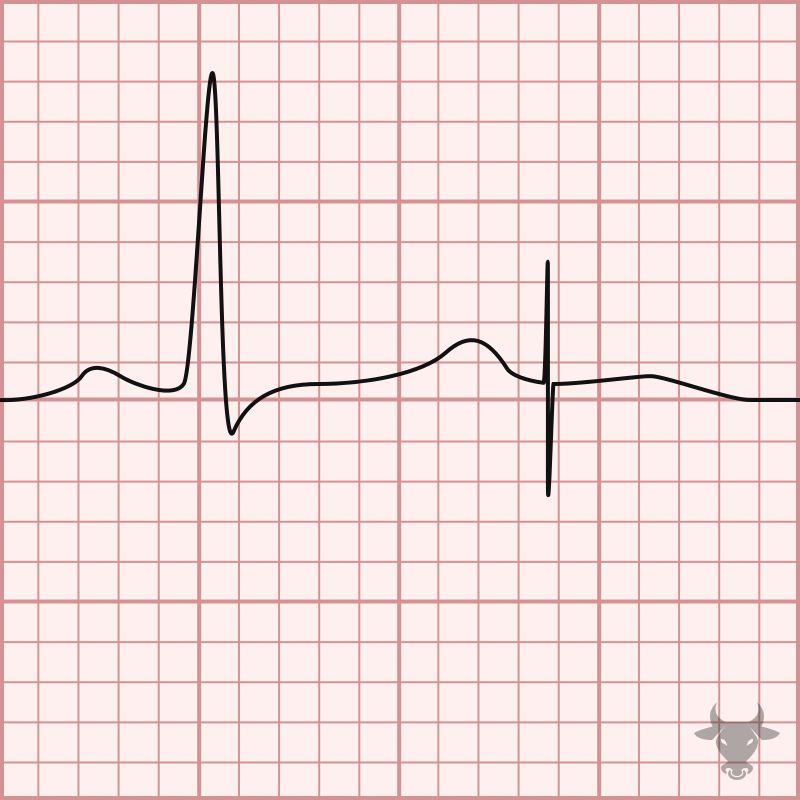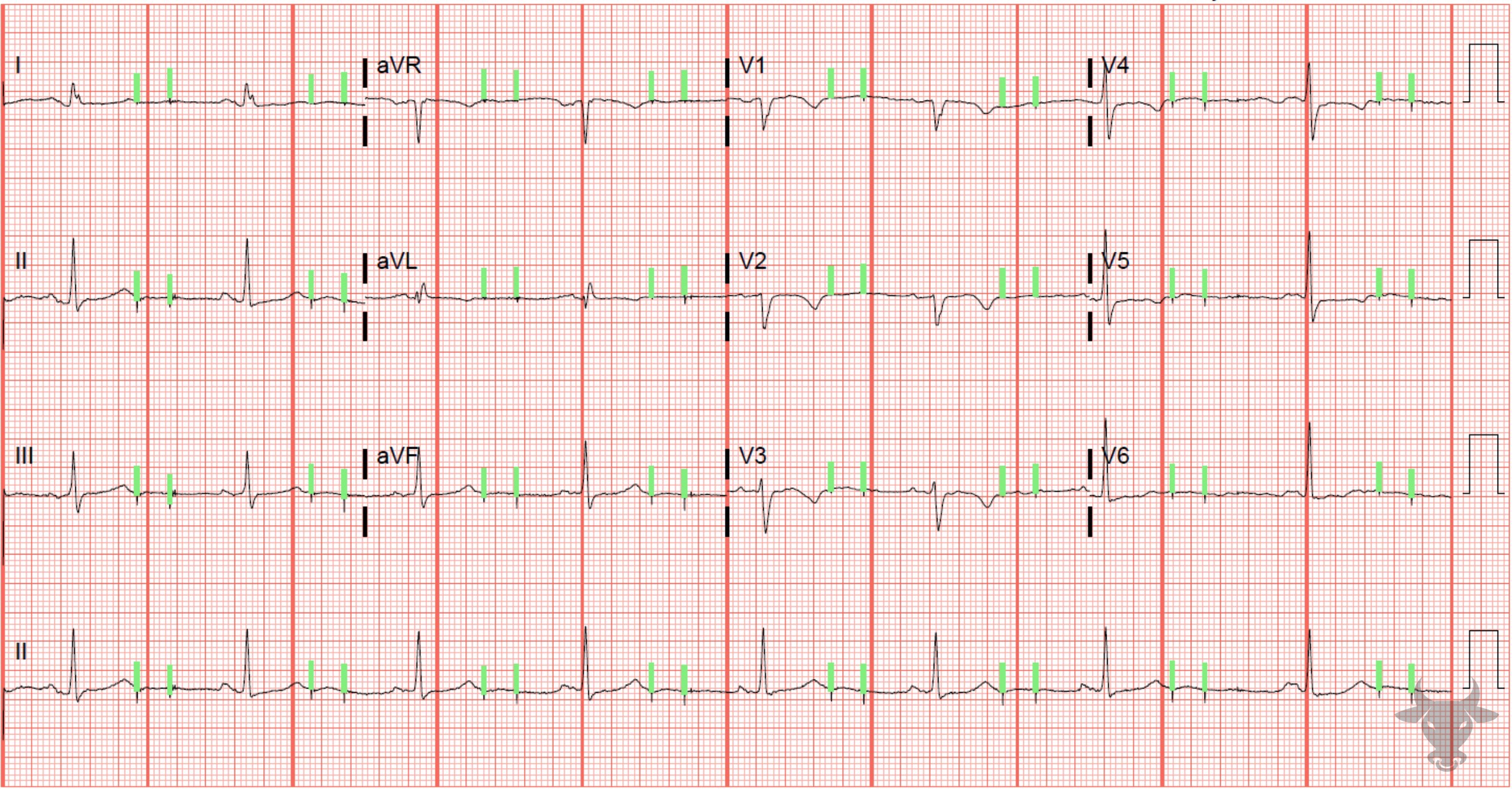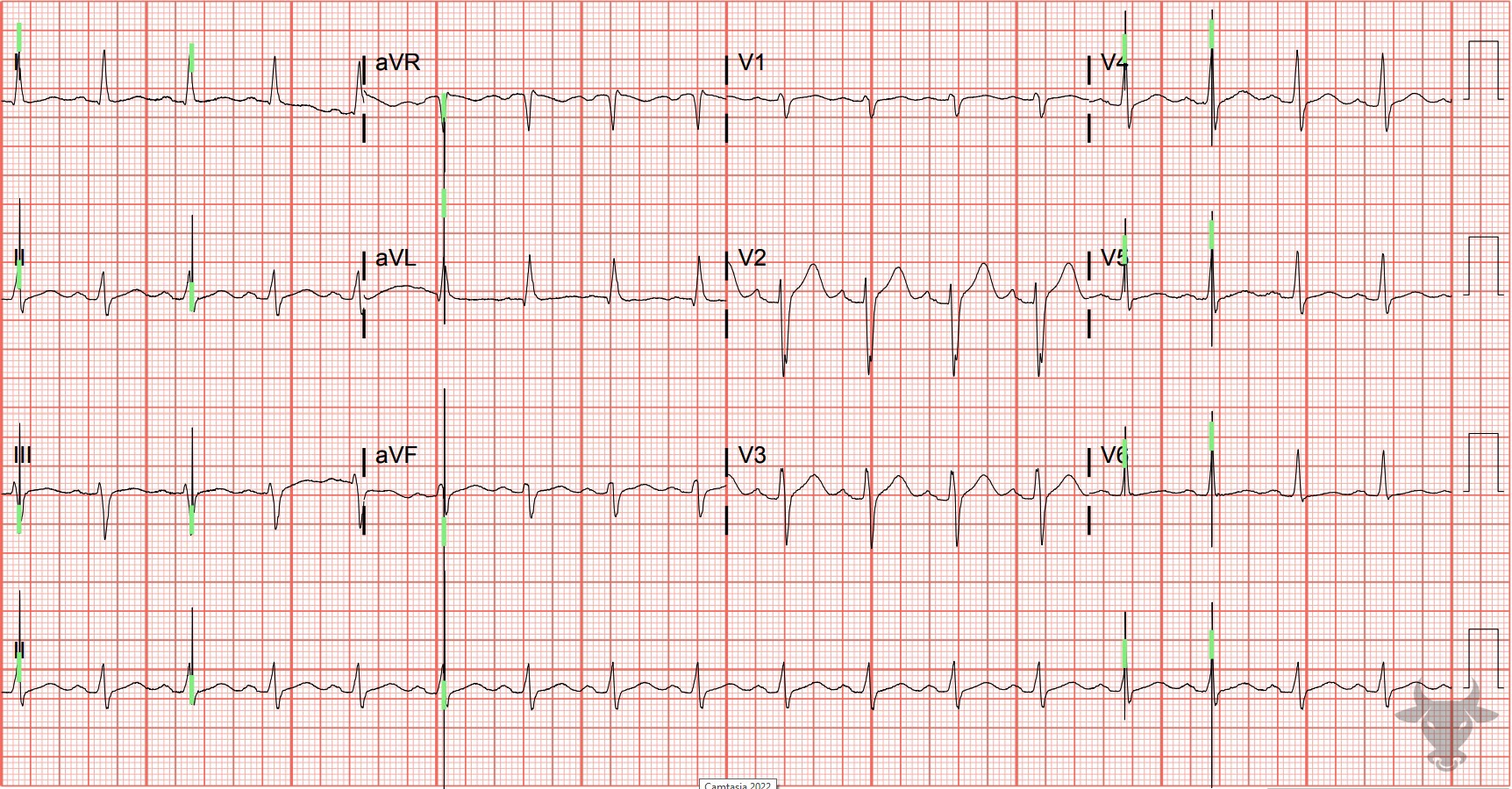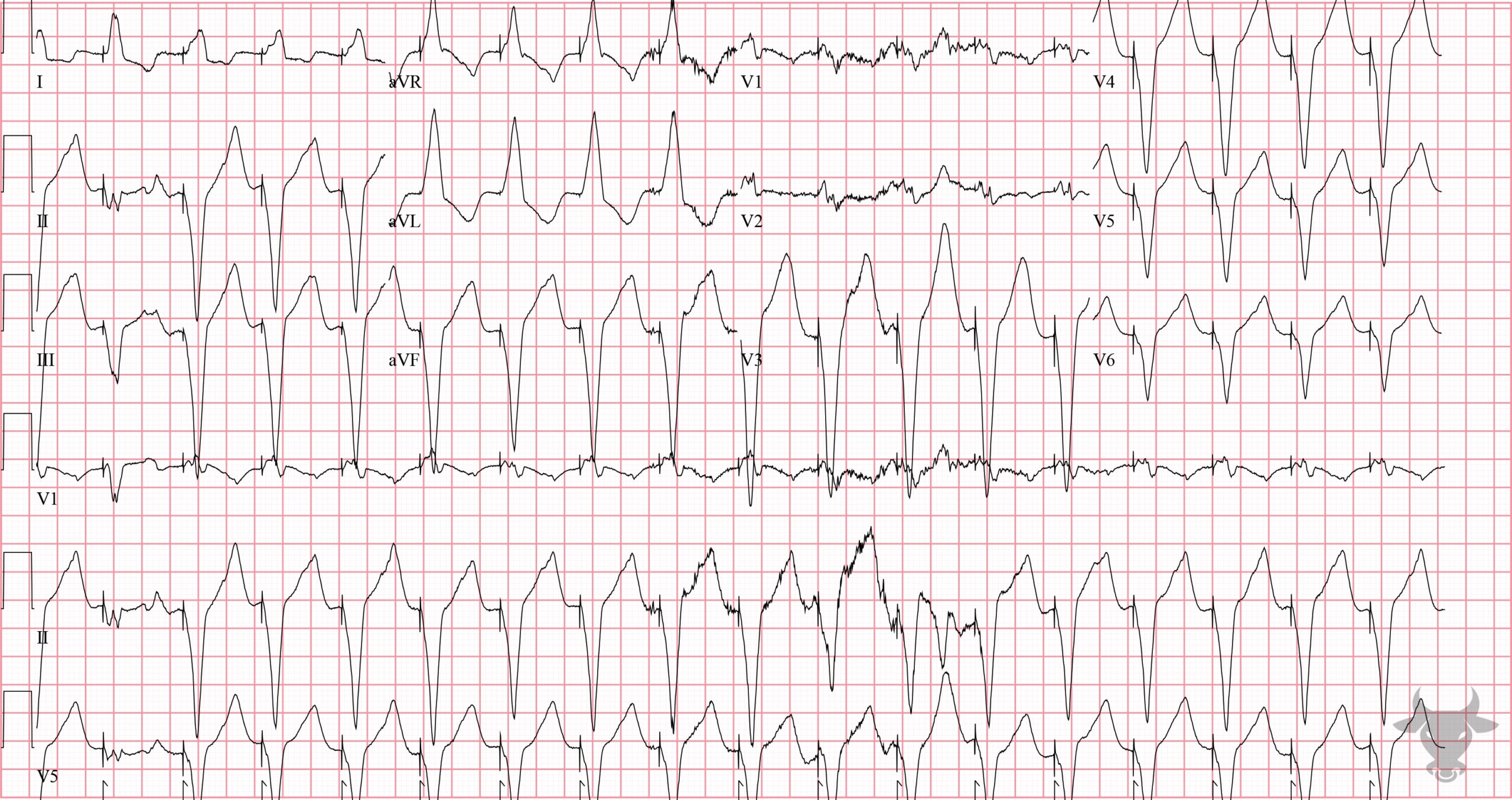Failure to pace occurs when the paced stimulus is not generated when expected. Pacemaker spikes are decreased or absent. It is usually caused by oversensing but can also be caused by lead fracture or insulation defect. Oversensing occurs when pacemaker activity is inhibited by inappropriately recognized non-cardiac activity (i.e., skeletal muscle).
Failure to sense occurs when the pacemaker fails to sense native cardiac activity which leads to asynchronous pacing. Pacing spikes can be seen within QRS complexes. This can be caused by a lead insulation break, new intrinsic bundle branch blocks, electrolyte abnormalities, and Class IC antiarrhythmics.
Failure to capture occurs when delivery of a pacing stimulus does not lead to myocardial depolarization. This can be caused by mechanical lead displacement or fracture, electrolyte abnormalities, and ischemia or infarct.

Failure to pace.
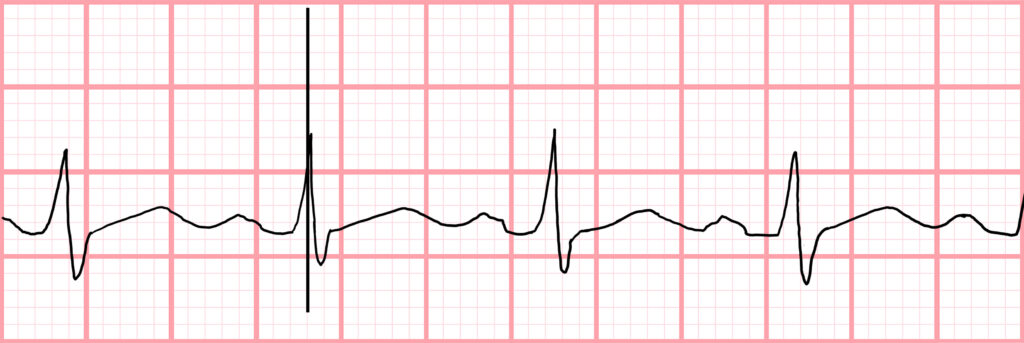
Failure to sense. A pacing spike can be found within the QRS complex.

Failure to capture. Pacing spikes fail to produce QRS complexes.

